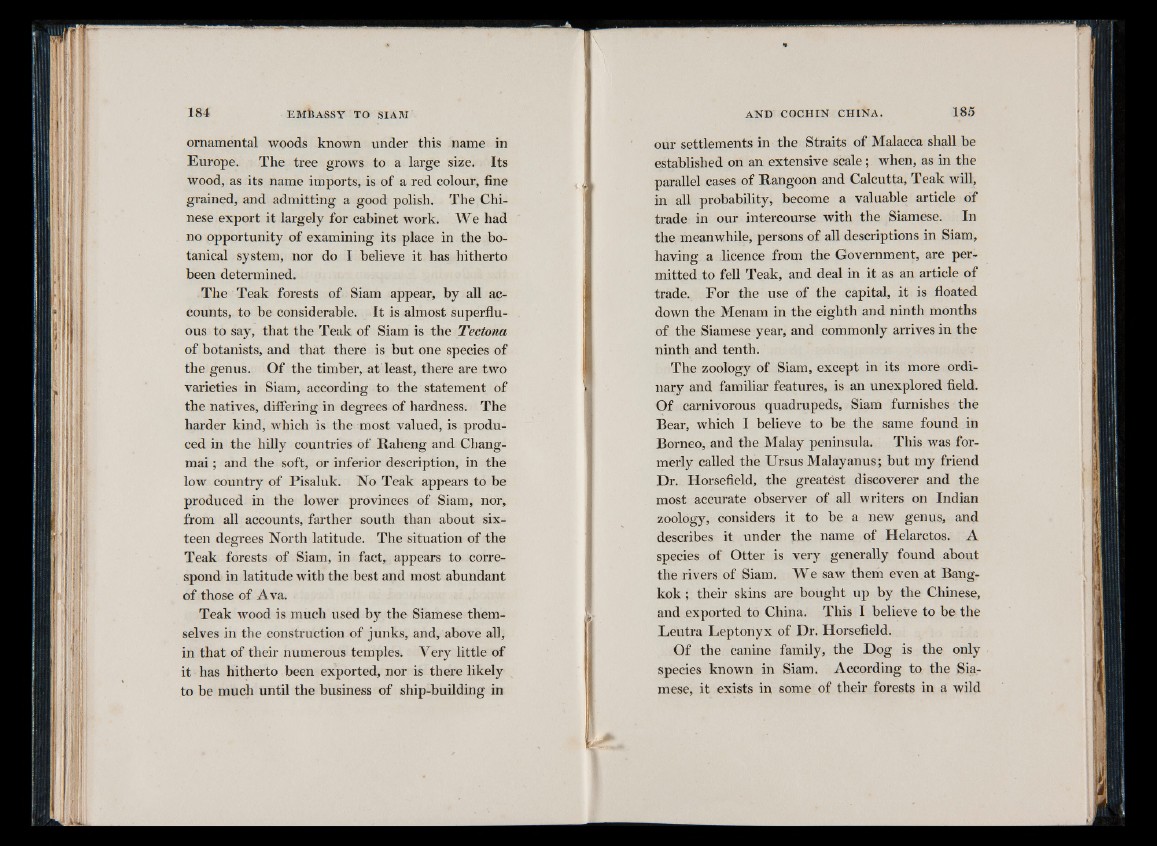
ornamental woods known under this name in
Europe. The tree grows to a large size. Its
wood, as its name imports, is of a red colour, fine
grained, and admitting a good polish. The Chinese
export it largely for cabinet work. We had
no opportunity of examining its place in the botanical
system, nor do I believe it has hitherto
been determined.
The Teak forests of Siam appear, by all accounts,
to be considerable. It is almost superfluous
to say, that the Teak of Siam is the Tectona
of botanists, and that there is but one species of
the genus. Of the timber, at least, there are two
varieties in Siam, according to the statement of
the natives, differing in degrees of hardness. The
harder kind, which is the most valued, is produced
in the hilly countries of Rah eng and Chang-
m a i; and the soft, or inferior description, in the
low country of Pisaluk. No Teak appears to be
produced in the lower provinces of Siam, nor,
from all accounts, farther south than about sixteen
degrees North latitude. The situation of the
Teak forests of Siam, in fact, appears to correspond
in latitude with the best and most abundant
of those of Ava.
Teak wood is much used by the Siamese themselves
in the construction of junks, and, above all,
in that of their numerous temples. Very little of
it has hitherto been exported, nor is there likely
to be much until the business of ship-building in
our settlements in the Straits of Malacca shall be
established on an extensive scale; when, as in the
parallel cases of Rangoon and Calcutta, Teak will,
in all probability, become a valuable article of
trade in our intercourse with the Siamese. In
the meanwhile, persons of all descriptions in Siam,
having a licence from the Government, are permitted
to fell Teak, and deal in it as an article of
trade. For the use of the capital, it is floated
down the Menam in the eighth and ninth months
of the Siamese year, and commonly arrives in the
ninth and tenth.
The zoology of Siam, except in its more ordinary
and familiar features, is an unexplored field.
Of carnivorous quadrupeds, Siam furnishes the
Bear, which I believe to be the same found in
Borneo, and the Malay peninsula. This was formerly
called the Ursus Malay anus; but my friend
Dr. Horsefield, the greatest discoverer and the
most accurate observer of all writers on Indian
zoology, considers it to be a new genus, and
describes it under the name of Helarctos. A
species of Otter is very generally found about
the rivers of Siam. We saw them even at Bangkok
; their skins are bought up by the Chinese,
and exported to China. This I believe to be the
Leutra Leptonyx of Dr. Horsefield.
Of the canine family, the Dog is the only
species known in Siam. According to the Siamese,
it exists in some of their forests in a wild